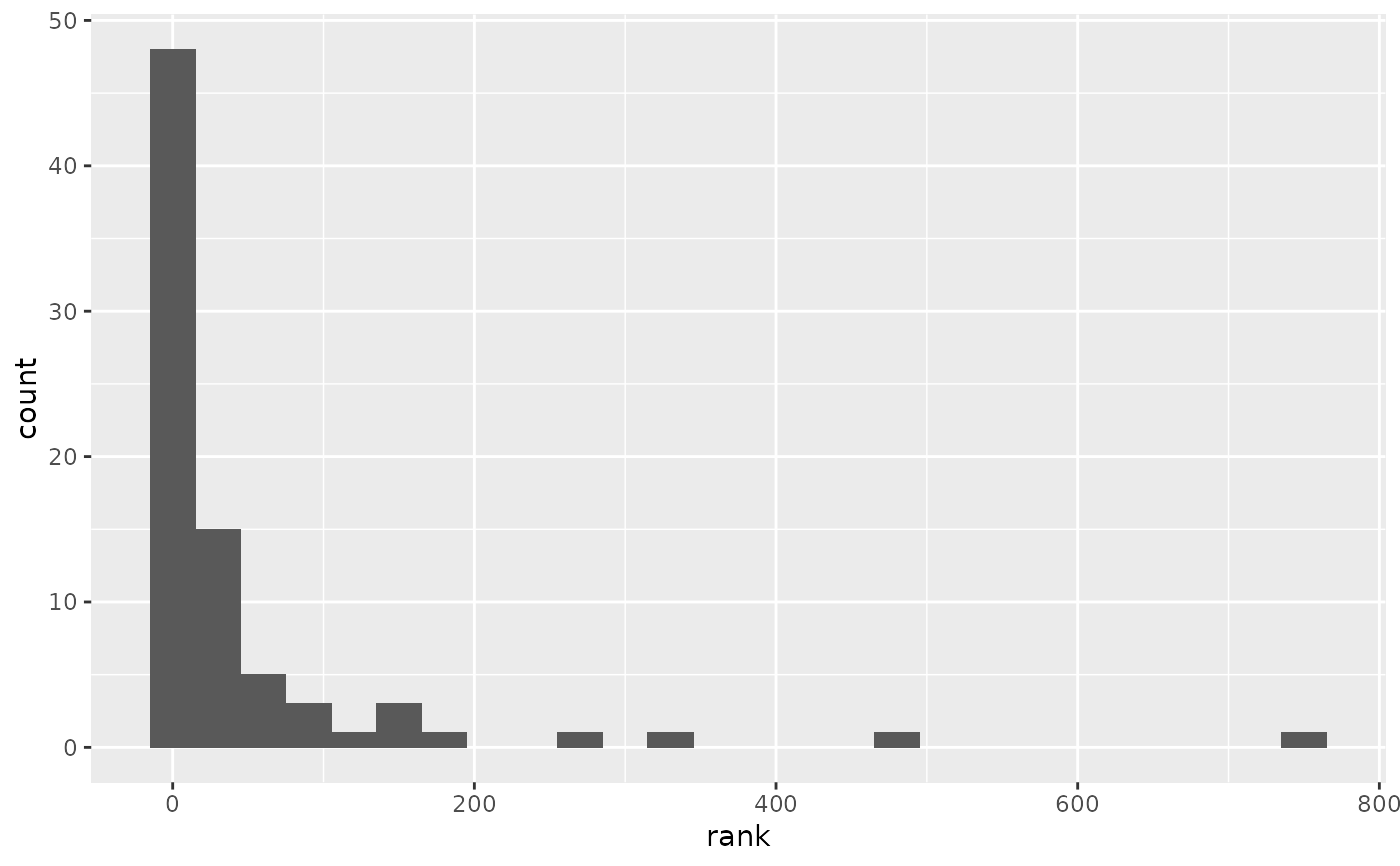Evaluate next-word predictions based on Stupid Back-off N-gram model on a test corpus.
eval_sbo_predictor(model, test, L = attr(model, "L"))
Arguments
| model | a |
|---|---|
| test | a character vector. Perform a single prediction on each entry of this vector (see details). |
| L | Maximum number of predictions for each input sentence
(maximum allowed is |
Value
A tibble, containing the input $(N-1)$-grams, the true completions, the predicted completions and a column indicating whether one of the predictions were correct or not.
Details
This function allows to obtain information on the quality of
Stupid Back-off model predictions, such as next-word prediction accuracy,
or the word-rank distribution of correct prediction, by direct test against
a test set corpus. For a reasonable estimate of prediction accuracy, the
different entries of the test vector should be uncorrelated
documents (e.g. separate tweets, as in the twitter_test
example dataset).
More in detail, eval_sbo_predictor performs the following operations:
Sample a single sentence from each entry of the character vector
test.Sample a single $N$-gram from each sentence obtained in the previous step.
Predict next words from the $(N-1)$-gram prefix.
Return all predictions, together with the true word completions.
Author
Valerio Gherardi
Examples
# \donttest{ # Evaluating next-word predictions from a Stupid Back-off N-gram model if (suppressMessages(require(dplyr) && require(ggplot2))) { p <- sbo_predictor(twitter_predtable) set.seed(840) # Set seed for reproducibility test <- sample(twitter_test, 500) eval <- eval_sbo_predictor(p, test) ## Compute three-word accuracies eval %>% summarise(accuracy = sum(correct)/n()) # Overall accuracy eval %>% # Accuracy for in-sentence predictions filter(true != "<EOS>") %>% summarise(accuracy = sum(correct) / n()) ## Make histogram of word-rank distribution for correct predictions dict <- attr(twitter_predtable, "dict") eval %>% filter(correct, true != "<EOS>") %>% transmute(rank = match(true, table = dict)) %>% ggplot(aes(x = rank)) + geom_histogram(binwidth = 30) }# }
